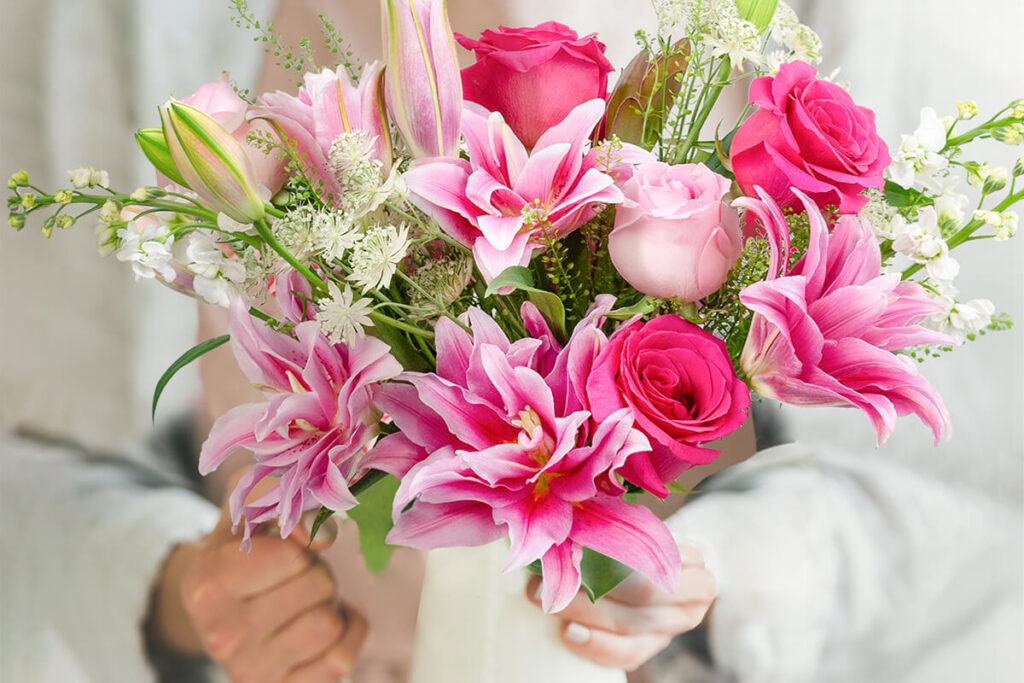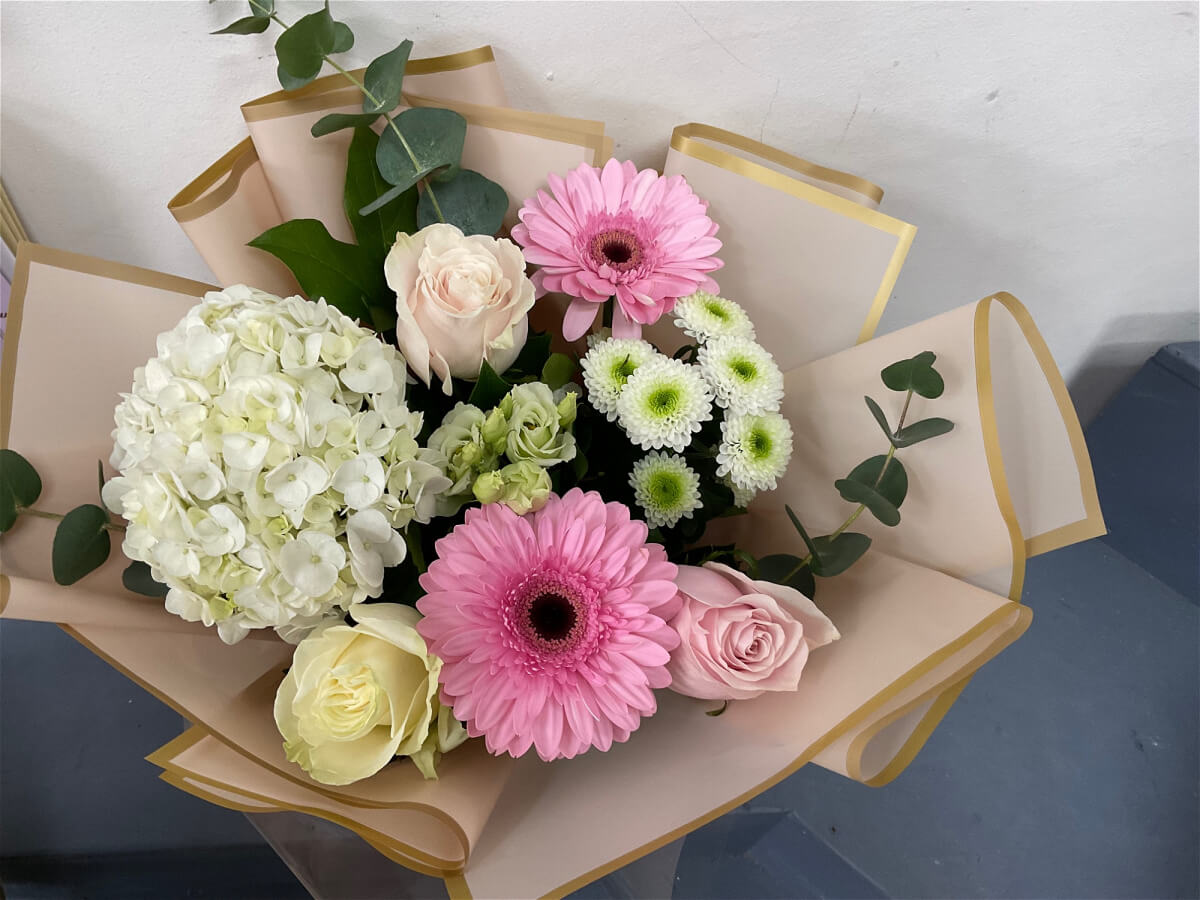There’s something about a peony in full bloom that stops you in your tracks. It doesn’t just whisper beauty—it announces it. Like a ruffled ballgown unfurling in slow motion, a blooming peony is pure drama, softness, and romance rolled into one. And perhaps that’s why, year after year, peonies remain the undisputed queens of the wedding bouquet.
They don’t come cheap. They don’t bloom long. But when they do? Oh, they’re unforgettable.
While roses may be the traditional symbol of love, the peony offers a more whimsical kind of romance—one that’s tender, elegant, and steeped in centuries of meaning. Join me as we explore the lush world of peonies, and discover why this flower has stolen so many hearts.
A First Look: Peonies at a Glance
Peonies (Paeonia) are herbaceous perennials (and some tree varieties) known for their lavish, fragrant blooms, which range from delicate blush to deep burgundy. Native to Asia, Europe, and Western North America, they’ve been cultivated for over 2,000 years.
With their soft petals, rich symbolism, and irresistible scent, peonies blend old-world elegance with modern romance—making them a staple in wedding arrangements, gardens, and even Instagram feeds.
But to understand the peony’s full appeal, we need to dig a little deeper into its meaning and heritage.
See more: Mosman Florist: Top Flower Arrangements for Every Occasion
Symbolism: Love, Honor, and a Dash of Prosperity
Peonies carry a deep symbolic legacy, especially in Eastern traditions.
Chinese Culture: The “King of Flowers”
In China, the peony is known as “sho yao” (meaning “beautiful”) and later “fu gui hua”—the flower of wealth and honor. It was considered the national flower during the Tang Dynasty and is often featured in traditional paintings, silk embroidery, and porcelain.
In Chinese symbolism, peonies represent:
- Romance and a happy marriage
- Prosperity and good fortune
- Honor, nobility, and feminine beauty
This makes them especially popular for wedding ceremonies and Chinese New Year, where they’re believed to bless the couple or home with love and abundance.
Western Interpretations
In Europe, peonies were long associated with healing and protection. The name Paeonia comes from Paeon, a student of Asclepius (the Greek god of medicine), who was said to have healed gods with the flower’s roots.
Over time, the flower’s meaning evolved:
- In Victorian floriography (the language of flowers), peonies symbolized bashfulness, possibly due to their tendency to droop under the weight of their large heads.
- Today, they often represent good fortune, compassion, romance, and—fittingly—a happy marriage.
Why Peonies Win at Weddings
So what makes peonies such a show-stealer in wedding bouquets, centerpieces, and flower crowns?
1. The Drama
Peonies bring volume, texture, and softness to any floral arrangement. Just a few stems can fill out a bouquet, and their oversized blooms make a statement without being flashy.
2. The Romance
The layers of petals give a dreamy, almost ethereal quality to wedding florals. Whether you’re going for classic elegance, rustic chic, or full-on fairy tale, peonies fit in effortlessly.
3. The Scent
Many peony varieties—especially the older ones—carry a heady, sweet fragrance that rivals the most luxurious perfumes. There’s something about that scent that lingers in memories long after the last dance.
4. The Symbolism
Given their association with prosperity, romance, and honor, peonies feel deeply meaningful on such a life-changing day. They’re not just beautiful—they’re poetic.

Peony Varieties: A Bloom for Every Bride (and Gardener)
There are three main types of peonies, each with its own growing habits and flower forms:
1. Herbaceous Peonies
- These die back to the ground in winter and reemerge in spring.
- Common in home gardens and wedding arrangements.
- Known for double blooms and wide color range.
- Popular varieties:
- Sarah Bernhardt: Classic, pale pink and ruffled—an all-time wedding favorite.
- Festiva Maxima: White with flecks of crimson—elegant and vintage.
- Bowl of Beauty: Bright pink outer petals with a fluffy yellow center.
2. Tree Peonies
- Woody shrubs that don’t die back in winter.
- Produce enormous, often fragrant flowers in rich hues like deep red, coral, and purple.
- A bit more finicky but absolutely stunning.
3. Itoh (Intersectional) Peonies
- Crosses between herbaceous and tree peonies.
- Combine the best of both worlds: hardy, lush, long-blooming, and available in unique shades like apricot and coral.
- Rising stars in both gardens and floristry.
Growing Peonies: Patience Pays Off
Peonies require a little patience and the right spot, but once they’re established, they’ll bloom reliably for decades—sometimes even generations.
Planting Tips
- Location: Full sun (at least 6 hours daily).
- Soil: Well-draining, rich in organic matter.
- Depth: Don’t plant too deep—eyes (buds) should be 1–2 inches below the surface.
- Spacing: Give them room to breathe; airflow reduces disease.
Caring for Peonies
- Water deeply during dry spells.
- Support large blooms with stakes or rings.
- Cut back in fall after foliage dies down.
Peonies don’t like to be disturbed, so once you plant them, leave them be. They may take 2–3 years to bloom fully—but trust me, it’s worth the wait.
Peonies Around the World
Peonies have fans all over the globe, from lush Japanese gardens to cozy English borders.
- In France, peonies are a staple in floral boutiques—especially around spring weddings.
- In Japan, peonies are symbols of bravery and honor, often celebrated in seasonal festivals.
- In the United States, they’re so beloved that Indiana adopted the peony as its state flower (replacing the zinnia in 1957).
Their broad appeal is no mystery—peonies combine visual drama with emotional depth, a rare combination in the floral world.
Peonies in Art, Poetry, and Design
Peonies have inspired painters, poets, and designers for centuries.
- Impressionist artists like Renoir and Fantin-Latour painted them for their lush forms and gentle shadows.
- In poetry, peonies symbolize both beauty and ephemerality: “The peony falls / Spilling out yesterday’s perfume— / Love fades so soon.”
— Traditional Haiku - In modern times, they appear on wallpaper, wedding invitations, and textile prints—offering a timeless nod to luxury and femininity.
Conclusion: A Bloom That Stays in the Heart
In a world that often rushes past subtlety, the peony asks us to slow down and savor. To appreciate unfolding, layers, softness, and scent. It’s not a bloom for instant gratification—but once it shows up, it steals the scene.
While roses may speak of passion and desire, peonies speak of commitment, trust, and joy. They’re the flowers of anniversaries and new beginnings, of long conversations and gentle mornings.
As a gardener, I can tell you there’s no thrill quite like seeing that first peony bud swell and burst. It’s like nature giving you a love letter you’ve been waiting months to receive.
So whether you’re planning a wedding, planting a garden, or simply admiring a bouquet, remember: peonies don’t just decorate a space—they elevate it.
“A peony is like a whispered promise… it takes its time, but when it arrives, it arrives with grace.”

